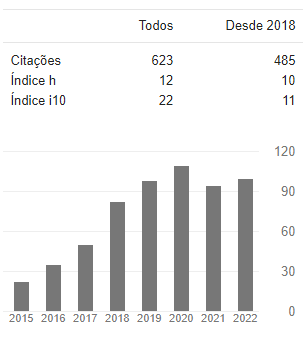LA GESTION DE LA DIVERSITE CULTURELLE PAR LES CHEFS D'ETABLISSEMENT REVUE DE LA LITTERATURE
DOI:
https://doi.org/10.14393/REPOD-v4n1a2015-31338Resumen
Contemporary education systems need to address increasing Cultural diversity of students and the need to a change of perspective. From a problem to solve, cultural diversity can become an opportunity to improve learning. This article presents a synthesis of literature on the role of school principals in the management of cultural diversity. The academic literature  on this issue is very heterogeneous. We present the main theoretical and conceptual debates. The notion of social justice appears to represent  an innovative concept likely to destabilize unequal power relations between groups. The text discusses the professionalization of principals. This article highlights a tension between two visions of school leadership in the management of cultural diversity: a vision linked to critical pedagogy that develops multicultural education as a means to promote social justice and transformation of school structures. On the other side, an approach centered on management of education with a more focused approach towards measurable learning outcomes  and greater control of the cost of education.Referencias
ANDERSON, G. L. (1990). Toward a critical constructivist approach to school administration: Invisibility, legitimation, and the study of non-events. Educational Administration Quarterly, 26(1), 38.
BANKS, J. A. (2001). Cultural diversity and education : foundations, curriculum, and teaching / James A. Banks (4th ed.). Boston, Toronto: Allyn et Bacon
BARRÈRE, A. (2006). Sociologie des chefs d'établissement: les managers de la République. Paris: PUF.
BASS, B. M. (1985). Leadership and performance beyond expectations. New York : Free Press.
BENNIS, W. (1984). Transformative power and leadership. Leadership and organizational culture: New perspectives on administrative theory and practice, 64-71
BILLOT, J., GODDARD, J. T., & CRANSTON, N. (2007). How principals manage ethnocultural diversity: Learning from three countries. Paper presented at the CCEAM Annual Conference (Cyprus, February).
BLASE, J., & BLASE, J. (1998). Handbook of Instructional Leadership: How Really Good Principals Promote Teaching and Learning. Thousands Oaks, CA : Corwin Press.
BORLAND, B. (1994). How Two School Faculties Look at « Multicultural Education ». Rapport de recherche. Virgina : Université de Virginia.
BROADFOOT, P. (2000). Un nouveau mode de régulation dans un système décentralisé: l'État évaluateur. Revue française de pédagogie, 130(1), 43-55.
BUSTAMANTE, R. M., NELSON, J. A., & ONWUEGBUZIE, A. J. (2009). Assessing schoolwide cultural competence: Implications for school leadership preparation. Educational Administration Quarterly, 45(5), 793.
BURNS, J. (1978). Leadership. New York : Harper & Row.
CAPPER, C. A., & JAMISON, M. T. (1993). Let the buyer beware: Total quality management and educational research and practice. Educational Researcher, 22(8), 25-30.
CAPPER, C. A., THEOHARIS, G., & SEBASTIAN, J. (2006). Toward a framework for preparing leaders for social justice. Journal of Educational Administration, 44(3), 209-224.
CARR, C. S. (1995). Mexican American Female Principals--In Pursuit of Democratic Praxis and a Legacy of Caring. Paper presented at the Annual Meeting of the University Council for Educational Administration (Salt Lake City, UT, October 28-30, 1995).
CORSON, D., (2000). Emancipatory leadership. International Journal of Leadership in Education, Vol. 3 No. 2, pp. 93-102.
DANTLEY, M., & TILLMAN, L. (2006). Social justice and moral transformative leadership. In C. Marshall & M. Olivia (Eds.), Leadership for social justice: Making revolutions happen (pp. 16-29). Boston: Pearson.
DILLARD, C. B. (1995). Leading with her life: An African American feminist (re) interpretation of leadership for an urban high school principal. Educational Administration Quarterly, 31(4), 539.
DUTERCQ, Y., & LANG, V. (2001). L'emergence d'un espace de régulation intermédiaire dans le système scolaire français. Education et sociétés(2), 49-64.
FINE, M. (1994). Dis-stance and other stances: Negotiations of power inside feminist research. Power and method: Political activism and educational research, 13-35.
FOSTER, W. (1986). Paradigms and promises: New approaches to educational administration. Buffallo, NY : Prometheus Books.
GAMORAN, A. (1996). Curriculum standardization and equality of opportunity in Scottish secondary education: 1984-90. Sociology of Education, 1-21.
GARDINER, M. E., & ENOMOTO, E. K. (2006). Urban school principals and their role as multicultural leaders. Urban Education, 41(6), 560.
GATHER THURLER, M., KOLLY OTTIGER, I., LOSEGO, P., MAULINI, O., DENECKER, C., JAN, A., & TCHOUALA, C. (2011). Le travail reel des directeurs d’institutions scolaires et socio-sanitaires Rapport intermédiaire.
GATHER THURLER, M., & PERRENOUD, P. (2004). Professionnalisation et formation des chefs d’établissement. Administration et éducation, 102, 2004.
GERIN-LAJOIE, D. (2011). Multicultural education: nothing more than folklore? Canadian Issues/Thèmes Canadiens(1), 24-27.
GORDON, M. F., & LOUIS, K. S. (2009). Linking parent and community involvement with student achievement: Comparing principal and teacher perceptions of stakeholder influence. American Journal of Education, 116(1), 1-31.
HAAR, J. M., & ROBICHEAU, J. W. (2008). Minority School Leaders: Contributing to the Development of an Inclusive Multi-Cultural Environment. Paper presented at the 60th Annual AACTE National Conference, New Orleans, LA. (February, 2008).
HERRITY, V. A., & GLASMAN, N. S. (1999). Training Administrators for Culturally and Linguistically Diverse School Populations: Opinions of Expert Practitioners. Journal of School Leadership, 9(3), 235-253.
KATZ, A. (1999). Keepin'it real: Personalizing school experiences for diverse learners to create harmony and minimize interethnic conflict. Journal of Negro Education, 68(4), 496-510.
KOSE, B. W. (2011). Developing a Transformative School Vision: Lessons From PeerNominated Principals. Education and Urban Society, 43(2), 119-136.
KOSE, B. W. (2009). The Principal’s Role in Professional Development for Social Justice. Urban Education, 44(6), 628.
LEE, V. E., & SMITH, J. B. (1997). High school size: Which works best and for whom?. Educational Evaluation and Policy Analysis, 19(3), 205-227.
LEE, V. E., SMITH, J. B., & CRONINGER, R. G. (1997). How high school organization influences the equitable distribution of learning in mathematics and science. Sociology of education, 128-150.
LEITHWOOD, K. (1992). The move toward transformational leadership. Educational Leadership, 49(5), 8-12.
LEITHWOOD, K., & JANTZI, D. (2000). The effects of transformational leadership on organizational conditions and student engagement with school. Journal of Educational Administration, 38(2), 112-129.
LEITHWOOD, K., & JANTZI, D. (1999). Transformational school leadership effects: A replication. School Effectiveness and School Improvement, 10(4), 451-479.
LEITHWOOD, K. A., & RIEHL, C. (2003). What we know about successful school leadership. Philadelphia, PA: Laboratory for Studen Success, Temple University.
LINDSEY, R. B., ROBINS, K. N., & TERRELL, R. D. (2003). Cultural proficiency: A manual for school leaders. Thousands Oaks, CA : Corwin Pr.
MAGNO, C., & SCHIFF, M. (2010). Culturally Responsive Leadership: Best Practice in Integrating Immigrant Students. Intercultural Education, 21(1), 5.
MAROY, C. (2005). Vers une régulation post-bureaucratique des systèmes d'enseignement en Europe. Cahiers de recherche en éducation et formation, 49, 1-30.
MARSHALL, C., & OLIVA, M. (2006). Leadership for social justice: Making revolutions in education. Boston : Pearson.
MCMAHON, B. (2007). Educational administrators' conceptions of whiteness, anti-racism and social justice. Journal of Educational Administration, 45(6), 684-696.
MCMAHON, B. & ARMSTRONG, D. (2006), Framing equitable praxis: approaches to building socially just and inclusionary educational communities. In Armstrong, D. and McMahon, B. (Eds), Inclusion in Urban Eduactional Environments: Addressing Issues of Diversity, Equity and Social Justice. Greenwich, CT : Information Age.
MCCRAY, C. R., & BEACHUM, F. D. (2010). An Analysis of How the Gender and Race of School Principals Influence Their Perception of Multicultural Education. International Journal of Education Policy and Leadership, 5(4).
MCKENZIE, K. B., CHRISTMAN, D. E., HERNANDEZ, F., FIERRO, E., CAPPER, C. A., DANTLEY, M., GONZALEZ, M. L., CAMBRON-MCCABE, N. & SCHEURICH, J. J.(2008). From the field: A proposal for educating leaders for social justice. Educational Administration Quarterly, 44(1), 111.
PERRENOUD, P. (2001). L’établissement scolaire entre mandat et projet: vers une autonomie relative. In G. Pelletier. Autonomie et décentralisation en éducation: entre projet et évaluation. Montréal: Université de Montréal/AFIDES
RIEHL, C. J. (2000). The principal's role in creating inclusive schools for diverse students: A review of normative, empirical, and critical literature on the practice of educational administration. Review of Educational Research, 70(1), 55.
RYAN, J. (2003), Leading Diverse Schools. Dordrecht : Kluwer Academic.
SALLIS, E. (1993). Total quality management in education. New York : Routledge.
SHIELDS, C. M. (2004). Dialogic leadership for social justice: Overcoming pathologies of silence. Educational Administration Quarterly, 40(1), 109.
SHIELDS, C. M. (2010). Transformative leadership: Working for equity in diverse contexts.Educational Administration Quarterly, 46(4), 558.
SMITH, C. A. (2005). School Factors that Contribute to the Underachievement of Students of Color and What Culturally Competent School Leaders Can Do. Educational Leadership and Administration: Teaching and Program Development, 17, 12.
SPILLANE, J. P. (2005). Distributed leadership. The Educational Forum, 69 (2), pp. 143-150.
STRODL, P., & JOHNSON, B. (1994). Multicultural Leadership for Restructured Constituencies. Rapport de recherche. Université d’Alabama.
THEOHARIS, G. (2007). Social justice educational leaders and resistance: Toward a theory of social justice leadership. Educational Administration Quarterly, 43(2), 221.
THEOHARIS, G. (2010). Disrupting Injustice: Principals Narrate the Strategies They Use to Improve Their Schools and Advance Social Justice. The Teachers College Record, 112(1)
VAN ZANTEN, A., & BALL, S. (1997). Comparer pour comprendre: Globalisation, réinterprétations nationales et recontextualisations locales des politiques éducatives néolibérales. Revue de l'Institut de sociologie (1-4), 113-131.
WALKER, A., & QUONG, T. (1998). Valuing differences: Strategies for dealing with the tensions of educational leadership in a global society. Peabody journal of Education, 73(2), 81-105.
YOUNG, B. L., MADSEN, J., & YOUNG, M. A. (2010). Implementing Diversity Plans: Principals’ Perception of Their Ability to Address Diversity in Their Schools. NASSP Bulletin, 94(2), 135.
Descargas
Publicado
Número
Sección
Licencia
Derechos de autor 2015 Revista Educação e Políticas em Debate

Esta obra está bajo una licencia internacional Creative Commons Atribución-NoComercial-SinDerivadas 4.0.































